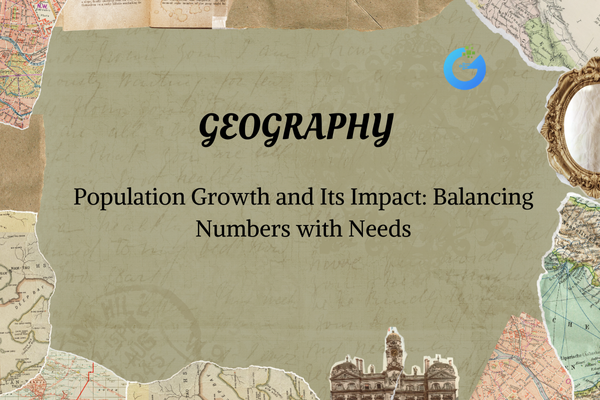Food is more than a necessity—it’s a global priority. Behind every grain of rice and glass of milk lies a complex system that feeds billions. Two of the most critical pillars of this system are food production and animal husbandry. Together, they not only fulfill nutritional needs but also support economic livelihoods, sustainability, and public health.
expert-led Biology classes – visit our website to learn more
What is Food Production?
Food production is the process of converting raw agricultural resources into consumable food. It spans planting, harvesting, processing, packaging, and distribution. This system must meet the demands of a growing population while balancing sustainability and nutrition.
Importance of Food Production
- Feeds the Population: As the global population nears 10 billion, food production ensures a steady supply of calories and nutrients.
- Drives the Economy: Agriculture provides jobs to millions, especially in rural areas.
- Reduces Hunger: Improved methods lead to increased yields, combating malnutrition.
- Supports Trade: Many countries rely on exporting crops like wheat, rice, or coffee.
Modern Techniques in Food Production
Mechanization
Machines like tractors and harvesters increase efficiency and reduce manual labor.
Precision Agriculture
Using GPS, sensors, and drones, farmers apply water, fertilizer, and pesticides more accurately.
.
Hydroponics and Vertical Farming
These soilless methods allow crops to grow indoors, saving space and water.
Challenges in Food Production
- Climate change affecting crop cycles
- Soil degradation due to overuse
- Water scarcity
- Post-harvest losses and food waste
What is Animal Husbandry?
Animal husbandry is the branch of agriculture concerned with the care, breeding, and management of livestock such as cows, goats, sheep, poultry, and pigs. It supplies dairy, meat, eggs, wool, and even biofuels.
Why Animal Husbandry Matters
- Protein Supply: It is a major source of high-quality protein for billions of people.
- Livelihoods: Especially in developing countries, animal farming supports millions of families.
- Agricultural Synergy: Livestock manure improves soil health for crop production.
- Diversity in Diet: It supports culinary diversity with meat, milk, cheese, and more.
Major Practices in Animal Husbandry
Dairy Farming
Focused on milk production from cows or buffaloes. Modern farms use milking machines, hygienic storage, and cold chains for quality.
Poultry Farming
Involves raising chickens, ducks, and turkeys for meat and eggs. Broiler farms for meat and layer farms for eggs are common setups.
Sheep and Goat Farming
Valuable for meat (mutton, chevon), wool, and milk, especially in arid regions.
Pig Farming
Efficient for meat production, pigs have a fast growth rate and high feed conversion.
Animal Nutrition and Health
Healthy animals produce better quality food. Balanced diets, clean water, regular check-ups, and vaccinations are vital for animal well-being.
Sustainable Animal Husbandry Practices
- Free-Range Systems: Animals graze naturally, improving welfare.
- Integrated Farming: Combines crop and livestock farming for mutual benefits.
- Manure Management: Converts waste into compost or biogas.
- Selective Breeding: Improves milk yield, growth rate, and disease resistance.
Environmental Impact and Solutions
Animal farming can contribute to greenhouse gas emissions and overgrazing, but solutions exist:
- Rotational Grazing reduces land degradation.
- Biogas Plants convert manure into clean energy.
- Feed Optimization lowers methane emissions.
Technology in Animal Husbandry
Smart sensors, health trackers, and mobile apps now assist farmers in monitoring animal health and productivity.
Future Trends in Food Production and Animal Husbandry
- Lab-Grown Meat: Reduces animal slaughter and emissions.
- CRISPR and Gene Editing: Enhances disease resistance in crops and animals.
- AI and IoT: Data-driven decisions improve productivity.
- Blockchain: Ensures food traceability from farm to fork.
Conclusion
Food production and animal husbandry are not just agricultural practices—they’re lifelines that support health, economy, and sustainability. Embracing innovation, sustainability, and ethical practices is key to feeding future generations. Whether through a robot milking a cow or a sensor optimizing crop irrigation, the future of farming is here—and it’s smart, sustainable, and secure.
FAQs
What is the role of animal husbandry in agriculture?
It provides essential food products, supports soil fertility, and contributes to rural livelihoods and economy.
What are examples of food production methods?
Examples include traditional farming, hydroponics, mechanized agriculture, and vertical farming.
How can food production be sustainable?
By using eco-friendly practices like crop rotation, organic farming, water-saving irrigation, and reduced chemical inputs.
Is animal farming harmful to the environment?
When mismanaged, it can be. However, sustainable techniques like rotational grazing and biogas use can reduce its impact.
How does technology help in animal husbandry?
Technology helps monitor health, increase productivity, and improve overall animal welfare through sensors and data analysis.
What are the benefits of combining crop and livestock farming?
It creates a natural synergy where waste from one becomes input for the other, improving soil health and farm efficiency.








